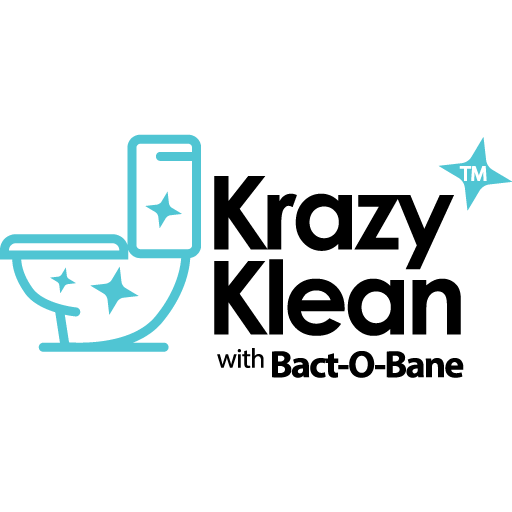When it comes to keeping your home clean and healthy, you've probably heard the terms "sanitizing" and "disinfecting" used interchangeably. However, these two cleaning methods are distinctly different, and understanding the difference can help you choose the right approach for protecting your family's health.
What Is the Difference Between Sanitizing and Disinfecting?
Sanitizing reduces the number of germs to safe levels, while disinfecting kills nearly all germs on surfaces. Both are important for maintaining a healthy home, but they serve different purposes and require different products and techniques.
Understanding Sanitizing: Reducing Germs to Safe Levels
Sanitizing is designed to reduce the number of bacteria, viruses, and other microorganisms on surfaces to levels considered safe by public health standards. The EPA requires sanitizers to reduce bacteria by 99.9% within 30 seconds to 5 minutes, depending on the product.
When to sanitize: Sanitizing is ideal for surfaces that come into contact with food, children's toys, or areas where complete sterilization isn't necessary but cleanliness is important. Kitchen counters, cutting boards, and high chairs are perfect examples of surfaces that benefit from regular sanitizing.
Sanitizing products include many household cleaners, antibacterial soaps, and alcohol-based solutions with at least 60% alcohol content. These products work quickly and are generally safer for frequent use around food and children.
For more on safe cleaning methods, check out our guide to cleaning hard water stains in toilets.
Understanding Disinfecting: Going Beyond Sanitizing
Disinfecting goes further than sanitizing by killing 99.999% of bacteria, viruses, and fungi on surfaces. This higher standard of germ elimination makes disinfecting essential for areas where dangerous pathogens might be present.
When to disinfect: Disinfecting is crucial for bathrooms, especially toilets, as well as areas where someone has been sick, or high-touch surfaces like doorknobs and light switches during flu season. Any surface that might harbor serious pathogens requires disinfection rather than just sanitizing.
Disinfecting products must be EPA-registered and specifically labeled as disinfectants. These include bleach solutions, alcohol solutions with 70% or higher concentration, and commercial disinfectants that list specific pathogens they eliminate.
For the best disinfecting solutions, see this guide on the best toilet bowl cleaner.
Key Differences Between Sanitizing and Disinfecting: Effectiveness
-
Sanitizing reduces germs to safe levels but doesn’t eliminate all microorganisms. It is sufficient for most everyday cleaning tasks and routine maintenance.
-
Disinfecting kills nearly all germs, including dangerous bacteria, viruses, and fungi that could cause serious illness. This level of elimination is necessary when dealing with potentially hazardous contamination.
Contact time also differs significantly. Sanitizers typically work within 30 seconds to 5 minutes, while disinfectants often require 1-10 minutes of contact time to achieve their full effectiveness.
Choosing the Right Method: When to Sanitize vs Disinfect
- Kitchen surfaces generally need sanitizing for daily cleaning, but require disinfecting after handling raw meat or when someone in the household is ill.
- Bathroom surfaces need disinfecting due to the high concentration of harmful bacteria and viruses. Toilets, in particular, require disinfection to eliminate dangerous pathogens like E. coli and norovirus.
- Children's items like toys and high chairs typically need sanitizing since harsh disinfectants can be harmful to children, but the items still need to be safe from germs.
- High-touch surfaces during illness outbreaks require disinfecting to prevent spreading viruses and bacteria to other family members.
For bathroom maintenance tips, learn more from our post on toilet maintenance tips for a long-lasting clean bathroom.
The Science Behind Sanitizing and Disinfecting Standards
The EPA sets strict standards for both sanitizing and disinfecting products:
-
Sanitizers must demonstrate a 99.9% reduction in test bacteria within the specified contact time. This 3-log reduction is sufficient for most non-medical applications.
-
Disinfectants must achieve a 99.999% kill rate (5-log reduction) of specific test organisms. This higher standard ensures elimination of dangerous pathogens that could cause serious illness.
Common Misconceptions About Sanitizing and Disinfecting
Many people assume that stronger always means better, but this isn't necessarily true. Using disinfectants when sanitizing would suffice can be wasteful, more expensive, and potentially harmful due to stronger chemical exposure.
-
"Antibacterial" doesn’t mean disinfectant. Many antibacterial products are actually sanitizers that reduce bacteria but don’t eliminate viruses or fungi.
-
Natural doesn’t mean ineffective. Some natural products like vinegar and hydrogen peroxide can be effective sanitizers, though they may not meet EPA standards for disinfection.
How to Make the Right Choice: When to Sanitize and When to Disinfect
For most household cleaning, sanitizing is sufficient and safer for regular use. It effectively reduces germs to safe levels without the harsh chemicals found in many disinfectants.
Disinfecting becomes essential when dealing with bathrooms, illness, or situations where dangerous pathogens might be present. The extra chemical strength is justified by the need to eliminate serious health threats.
Combining both methods often provides the best approach—regular sanitizing for maintenance with periodic disinfecting for high-risk areas or situations.
A Better Approach: Prevention Over Reactive Cleaning
The most effective strategy combines understanding when to sanitize versus disinfect with preventing the conditions that allow dangerous pathogens to thrive. Rather than constantly battling germs with harsh chemicals, innovative solutions can maintain hygienic conditions automatically.
Eliminate the Guesswork with Krazy Klean
What if you could skip both sanitizing and disinfecting? Krazy Klean prevents mineral buildup that harbors bacteria, keeping your toilet hygienic for up to 10 years—without harsh chemicals.
Our hydro-mineral magnet technology works 24/7 to eliminate the need for constant disinfecting:
- No bacterial buildup or stains
- No harsh chemicals required
- No guesswork on when to sanitize or disinfect
Since 1988, Krazy Klean has helped thousands of families maintain automatic toilet hygiene.
Ready to ditch the chemicals? Order your Krazy Klean capsule now and enjoy effortless toilet hygiene for 10 years.

